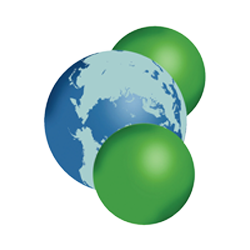
Thermokarst lakes are a dominant feature of many Arctic landscapes because they cover greater than 20% of the land surface in regions such as the Arctic Coastal Plain (ACP) of northern Alaska. These lakes form through ground subsidence of ice-rich permafrost and expand over time by shoreline erosion, and thus are highly dynamic landforms of many Arctic landscapes. Yet the exact processes controlling contemporary thermokarst lake expansion remain poorly understood.
Through a combination of aerial imagery analysis and field based data collection, this study will address the controls and processes governing lake shore expansion on the ACP, specifically focusing on the Barrow Peninsula, the northern Teshekpuk Lake Special Area (TLSA), and the lower Fish Creek Watershed near Nuiqsut. Lakes in these regions are actively expanding through processes such as thermal erosion, ice wedge expansion, and thaw slumping. All of these erosional processes play a role in the expansion of thermokarst lakes, but understanding where, when, and to what extent such processes dominate is warranted. By assessing rates of shoreline expansion relative to driving (e.g., wave action, thawing, and slumping) and resisting (e.g., bluff height and permafrost characteristics) processes, it will be possible to pinpoint how and why expansion varies among thermokarst lakes. Importantly included in this analysis will be evaluation of winter conditions, such as ice thickness and snow distribution, and their role in setting resisting processes for summer erosion. Lake expansion rates and erosion processes will be compared by ice regime (i.e., bedfast- vs. floating-ice) to understand how this fundamental condition controls lake geomorphology.
As the Arctic climate shifts towards warmer, wetter conditions, particularly in the winter, it is important to understand how lake form and landscape-scale extent will react. Predicting how thermokarst lakes will behave locally and on a landscape scale is increasingly important for managing habitat and water resources and informing models of land-climate interactions in the Arctic.